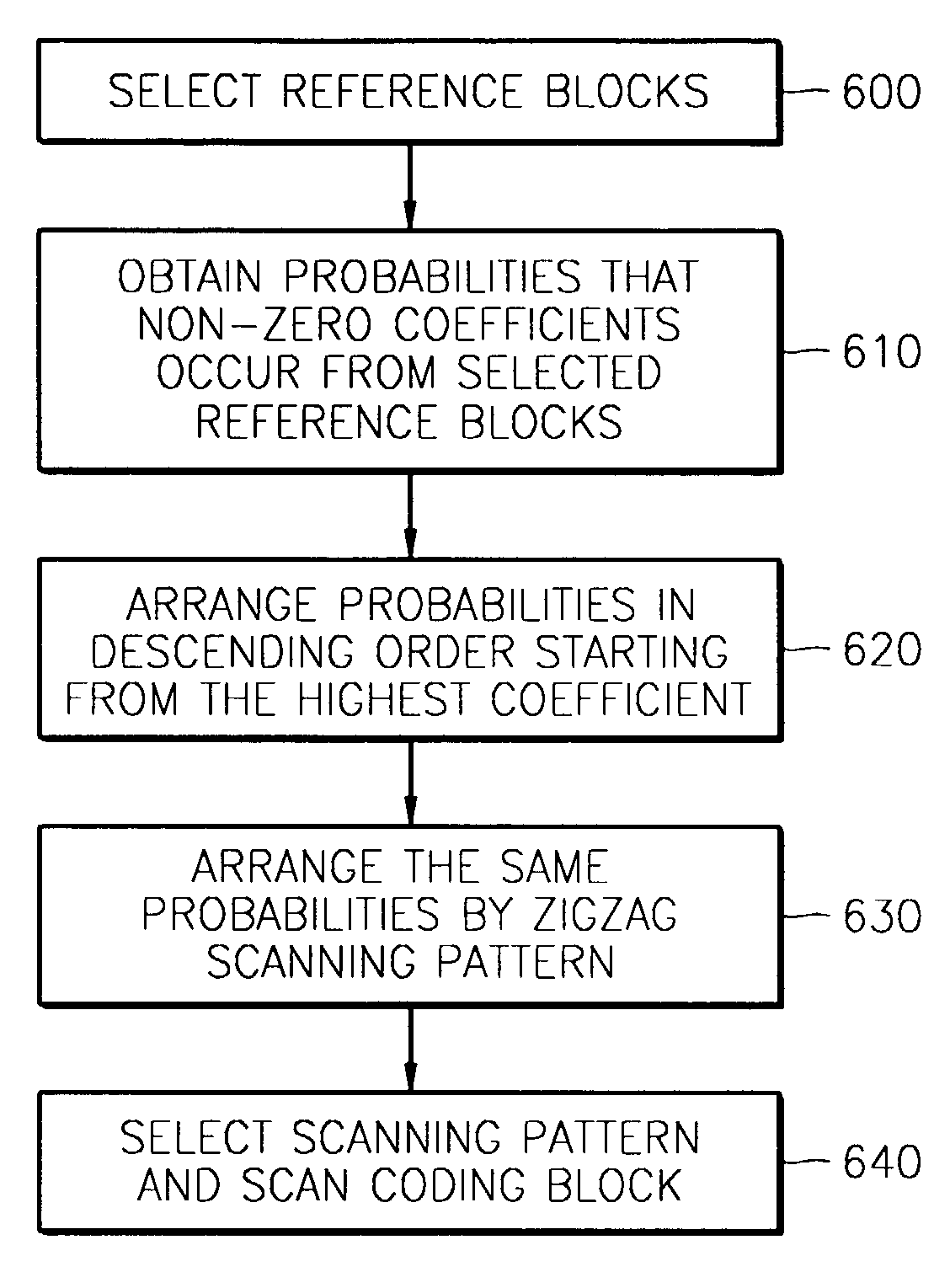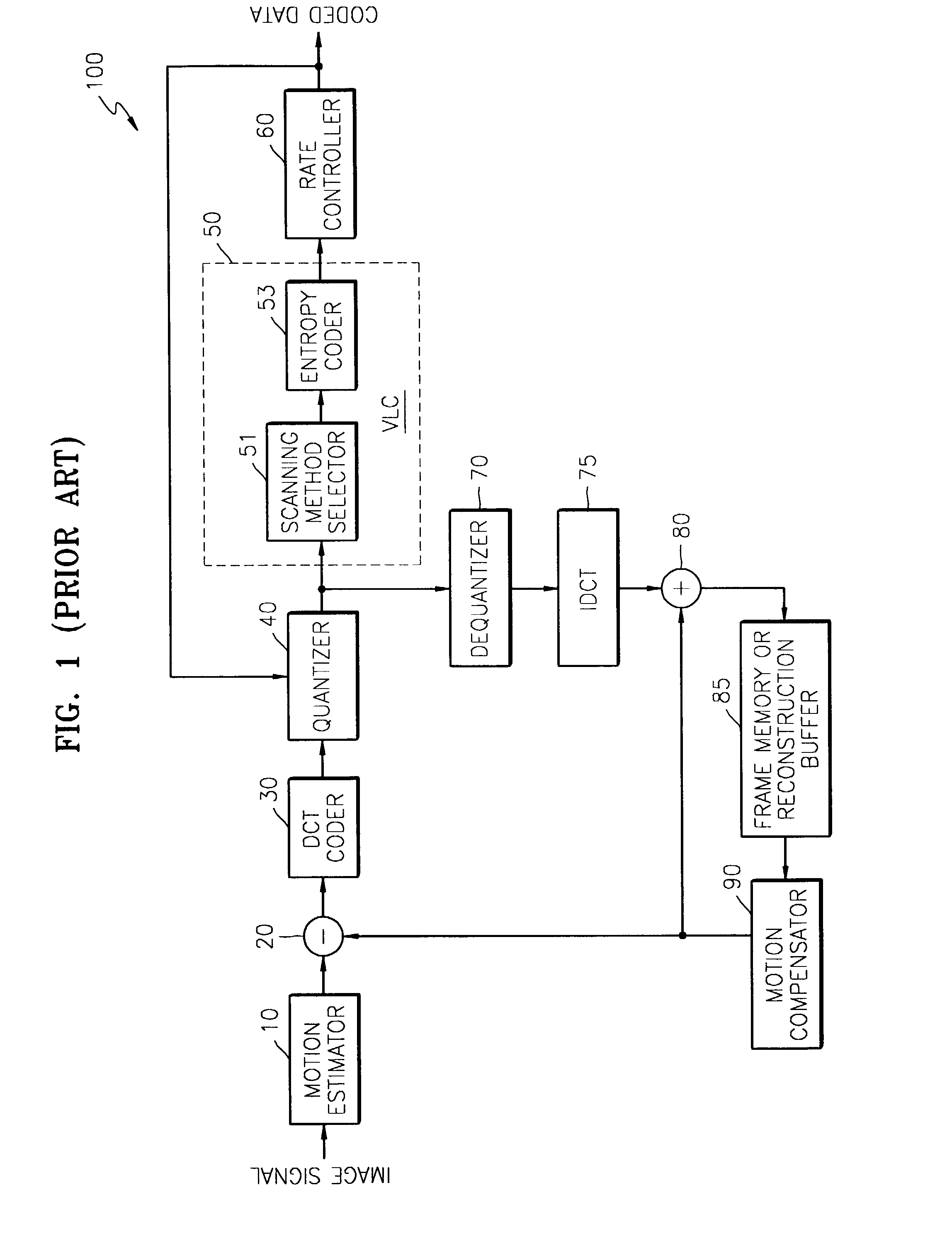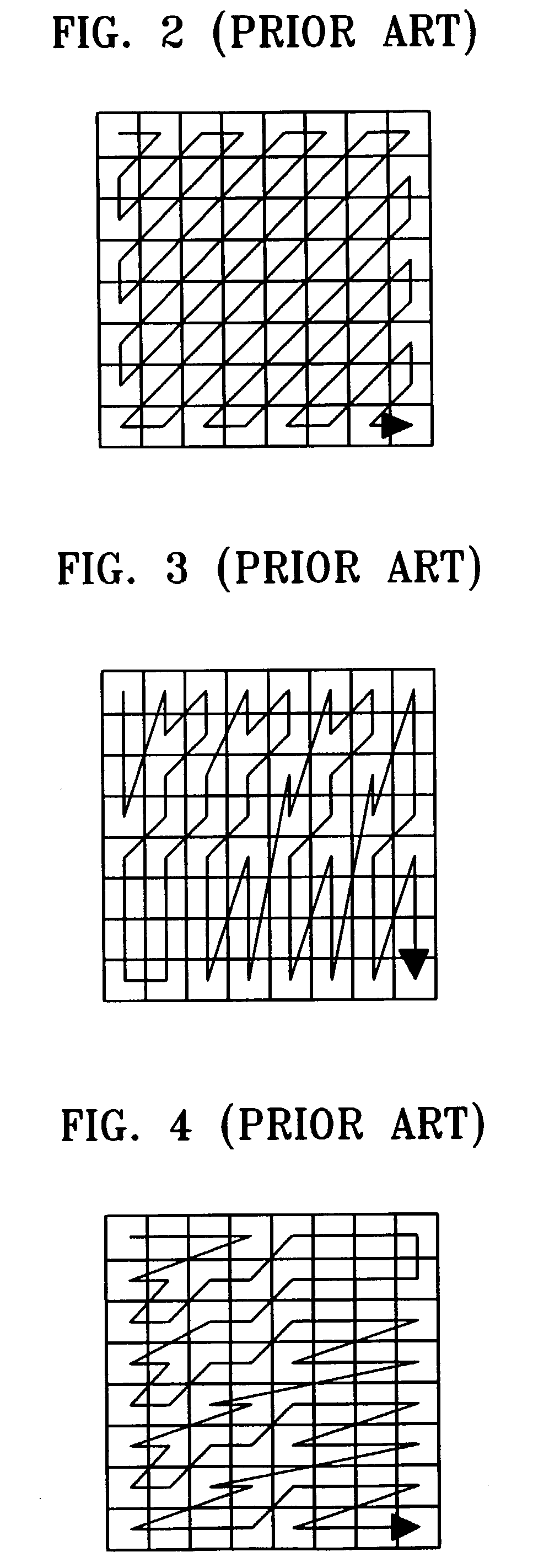Optimal scanning method for transform coefficients in coding/decoding of image and video
a transform coefficient and scanning method technology, applied in the field of image signal coding/decoding, can solve the problems of reducing coding efficiency, zigzag scanning pattern and predefined scanning pattern are not efficient at coding all image signals, and the selection of optimal scanning pattern for various decoding blocks is limited, so as to increase the compression efficiency of image signals
- Summary
- Abstract
- Description
- Claims
- Application Information
AI Technical Summary
Benefits of technology
Problems solved by technology
Method used
Image
Examples
Embodiment Construction
[0039]Attached drawings for illustrating a preferred embodiment of the present invention, and the contents written on the attached drawings must be referred to in order to gain a sufficient understanding of the merits of the present invention and the operation thereof and the objectives accomplished by the operation of the present invention.
[0040]Hereinafter, the present invention will be described in detail by explaining a preferred embodiment of the present invention with reference to the attached drawings. Like reference numerals in the drawings denote the same members.
[0041]FIG. 1 shows a block diagram of a general DCT coding system. Referring to FIG. 1, the DCT coding system (or an encoder 100) includes a motion estimator 10, a subtractor 20, a DCT coder 30, a quantizer 40, a variable length coder 50, a rate controller 60, a dequantizer 70, an inverse DCT (IDCT) 75, an adder 80, a frame memory or reconstruction buffer 85, and a motion compensator 90.
[0042]The variable length co...
PUM
 Login to View More
Login to View More Abstract
Description
Claims
Application Information
 Login to View More
Login to View More - R&D
- Intellectual Property
- Life Sciences
- Materials
- Tech Scout
- Unparalleled Data Quality
- Higher Quality Content
- 60% Fewer Hallucinations
Browse by: Latest US Patents, China's latest patents, Technical Efficacy Thesaurus, Application Domain, Technology Topic, Popular Technical Reports.
© 2025 PatSnap. All rights reserved.Legal|Privacy policy|Modern Slavery Act Transparency Statement|Sitemap|About US| Contact US: help@patsnap.com



